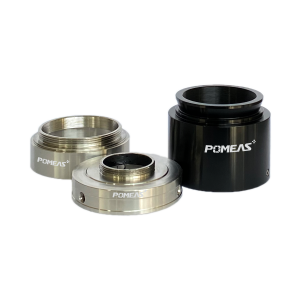In the field of photography and videography, the choice of lens mount is crucial to the quality of the image. c-mount and cs-mount, although sounding similar, are in fact distinctly different in their design and use.


Interface Definitions and Uses
C-mount: The C-mount is used primarily for connecting projectors and projection lenses, and in some microscope imaging systems. The diameter of each thread is 1 inch (25 mm), or 32 turns of thread per inch. the distance from the mounting reference plane to the focal plane of a C-mount interface is strictly 17.526 mm. This interface design allows a certain distance to be maintained between the lens and the image sensor for optimal imaging.
CS interface (CS-mount): CS interface, on the other hand, is a type of collar used to increase the distance between the lens and the image sensor. The CS-mount is a type of mount that is used to increase the distance between the lens and the image sensor, which is converted between the mounts by means of a collar to achieve optimal image rendering.The CS-mount was designed to help the lens render sharper images, so the main difference between the CS-mount and the C-mount lies in the distance between the image sensor and the lens. Specifically, the CS interface reduces this distance to 12.5mm, a reduction from the 17.5mm of the C interface.
Distance Differences
C interface: The distance from the image sensor to the lens is 17.5 mm, which is its fixed design standard.
CS interface: The distance from the image sensor to the lens is 12.5 mm. To use a C-interface lens with a CS-interface camera, it is usually necessary to add a 5 mm washer (C/CS connection ring) to enable interface conversion.
Compatibility and Applications
Compatibility: Due to the difference in distance between the C and CS interfaces, they are not fully compatible. However, it is possible to mount a C-interface lens on a CS-interface camera and vice versa by using a conversion ring (C/CS connection ring).
Application Scenarios: The C interface, because of its longer focal length, is more suitable for applications that require a larger working distance, such as microscope imaging, industrial inspection, etc. The CS interface, on the other hand, because of its longer focal length, is more suitable for applications that require a larger working distance. The CS interface, because of its shorter focal length, is more suitable for occasions with higher space requirements, such as small cameras, surveillance cameras, etc..
There is a significant difference between the C and CS interfaces in the distance between the lens and the image sensor, and this difference determines their applicability in different application scenarios.
Product recommendation
TECHNICAL SOLUTION
MORE+You may also be interested in the following information
FREE CONSULTING SERVICE
Let’s help you to find the right solution for your project!


 ASK POMEAS
ASK POMEAS  PRICE INQUIRY
PRICE INQUIRY  REQUEST DEMO/TEST
REQUEST DEMO/TEST  FREE TRIAL UNIT
FREE TRIAL UNIT  ACCURATE SELECTION
ACCURATE SELECTION  ADDRESS
ADDRESS Tel:+ 86-0769-2266 0867
Tel:+ 86-0769-2266 0867 Fax:+ 86-0769-2266 0867
Fax:+ 86-0769-2266 0867 E-mail:marketing@pomeas.com
E-mail:marketing@pomeas.com
